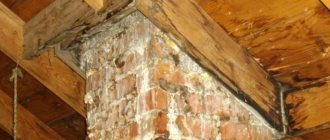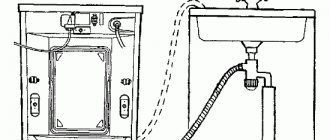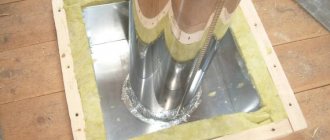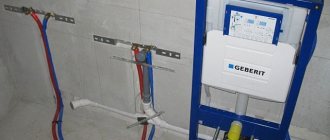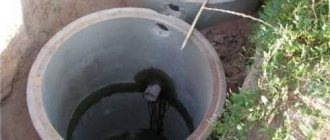The failure of the sewer system is a real natural disaster for the modern average person, accustomed to the benefits of civilization. It is for this reason that all communications need timely inspection, prevention and repair as necessary. It is better to fix a small problem without waiting for a global leak to appear. Many apartments have old cast iron risers, which have already served for half a century and have long been in need of replacement. A step-by-step process for repairing a sewer riser for beginners - below.
When is sewer repair necessary?
Sewerage is a system of pipelines connected to plumbing and household appliances. The purpose of this design is to drain wastewater from the premises. If the system is mishandled or worn out, malfunctions occur and repairs are required.
Common problems and reasons for their occurrence
Most often, residents are faced with the problem of clogged drains. There are 2 reasons why this happens:
- When installing the pipeline, the builders violated the technology, which led to the formation of stagnant areas. In a private house, due to improper design of the system, the system freezes and an ice plug interferes with the outflow of water.
- During operation, the sewage system was used incorrectly and preventative cleaning was not carried out. Animal fat, hair, and food waste enter the system and form impenetrable plugs at the turning points of the pipes.
Another problem is the natural wear and tear of the pipeline. Constant loads lead to leaks, cracks, and the formation of fistulas, and this cannot be done without repairs.
General internal sewage system
The sewer system is a network of pipelines through which waste liquids are removed from premises and sent to treatment plants. There are internal and external sewerage systems. The first is located inside the building and performs the functions of collecting and removing waste from household appliances or plumbing. The second (outer) part ensures the movement of wastewater to treatment facilities. Most of the problems that occur with drainage systems occur in internal areas. This is due to the high likelihood of blockages and frequent mechanical stress. Before repairing a sewer pipe, it is necessary to study its design. Indoors, the pipeline consists of two sections:
- horizontal layout (lounger). These are plumbing outlet elements connected to a horizontal pipe; its diameter is usually 50 mm;
- riser. This is a vertical pipeline, the task of which is to drain wastewater to the external parts of the system, as well as ventilate the internal cavity of the pipelines.
The horizontal pipe is connected to a tee with a diameter of 110 mm. It is used to connect the toilet. Connection to the riser is made using another tee of the same size.
Modern pipes used to assemble drainage systems are made of plastic. Most often it is PVC. This is a cheap, fairly durable, lightweight material. Assembly and repair of plastic sewer pipes is not difficult and can be done with your own hands. The only problem when performing repair work may be dismantling the pipe line. The design of the plastic elements is such that to remove and replace a defective part, you have to disassemble the entire system from the starting point. This is inconvenient and makes work too difficult. In addition, if expensive repairs are made to the apartment, complete disassembly of the system becomes impossible. Repair of sewer pipes is required without dismantling other elements. This is a doable task, but it requires an understanding of the specifics of the system. Improper work can cause blockages.
What is required for repair
The set of tools and consumables depends on the type of problem and the material from which the sewer pipeline is made. I recommend having everything you need because you never know what kind of emergency will happen.
Tools:
- hammer;
- chisel;
- Bulgarian;
- Screwdriver Set;
- pipe cutter;
- drill;
- cable with a brush.
Consumables:
- clamps;
- couplings;
- sealant;
- cement;
- rubber compressor;
- chemical solvents.
If you need to replace part of the pipeline or riser during repairs, you will additionally need a pipe made of cast iron or PVC.
What to do in such a situation?
1. Deepen the thinning area of the pipe somewhat, degrease and dry.
2. Seal this area with sealant.
3. To prevent a similar problem in the future, insulate the exhaust part of the riser.
If the smell still penetrates the apartment, then you will have to resort to more radical methods:
1. Cover the gap with “cold welding”. This is a two-component adhesive that can be easily sanded after hardening. You can improve the riser quite nicely.
2. Soak gauze with epoxy resin and wrap the pipe.
3. Wrap the riser with a rubber bandage and tie it with wire.
4. Apply the patch and secure with a clamp.
If a section of the sewer riser on the lower floors is damaged, then consultation with a specialist will be required. Perhaps one repair will not be enough. More radical methods will be required to eliminate the defect on the pipe. It must be taken into account that in this part of the sewer riser the pressure is the strongest.
Basic methods of do-it-yourself sewer repair
Common problems with the water drainage system in an apartment are blockages and leaks. Depending on the material from which the sewer system is made, a method for troubleshooting is selected.
Blockage
There are 4 ways to deal with blockages. I had the opportunity to use all 4 in practice, each copes with the task in its own way. The main thing is to correctly correlate the cleaning method and the scale of the blockage.
If your toilet or sink is draining slowly, it is wise to use the following methods. Perhaps repairs can be avoided:
- Everyone has a rubber plunger in their apartment. If used correctly, it will clear the clog quickly. Press the rubber tip firmly against the drain hole. There should be water in the sink or toilet at this moment. Perform 15–20 sharp pressures from bottom to top, making sure that the tip is firmly held on the earthenware. Then forcefully remove the plunger. The waste will rise to the surface.
- Cool boiling water will help remove fat deposits. Pour boiling water into the drain, wait 20 minutes and drain the water.
If the water does not go away, but rises up with the waste, use one of the following options:
- An effective method is chemicals to remove blockages. I used the drug "Mole", and I am pleased with the result. Other advertised products, such as "Mr. Muscle" or "Tiret", are also effective. You can pour a mixture of salt and soda into the hole, pour a glass of 70% vinegar essence, then rinse with water 2-3 times. This method will help with minor blockages. Caustic soda removes deposits on pipe walls, but this substance cannot be used for a cast iron system.
- Purchase a cable with an end from a home hardware store. The principle of operation is to twist the cable in the sewer pipe. At the same time, the brush at the end cleans the walls of plaque. While scrolling, you need to drain the water from the tank several times.
The cause of a clogged sink is the accumulation of debris in the siphon. This cannot even be called a repair: you need to unscrew the lower part of the siphon and the drain pipe, remove waste, rinse and put everything back together.
Leak
An unpleasant smell in the apartment is the first sign of a sewer leak. First you need to understand which area is leaking and promptly begin repairs. The main places are connections and joints. Leakage in these areas occurs from improper operation, installation errors and as a result of expiration of service life.
When an old cast iron pipe leaks, the entire sewer system or just the damaged area is replaced. If such repairs are beyond your means, there are other ways to fix the leak:
- process joints;
- repair a fistula or crack;
- remove the blockage.
If the leak has formed in a place hidden by the floor slab, you will not be able to repair such a defect yourself.
Leaking pipes at joints
Before starting repairs, you need to warn your neighbors and ask them not to use the sewer temporarily. Clean the leak area and dry with a hairdryer. Coat with cement mortar with the addition of PVA construction adhesive. The coating dries within 24 hours. During this time, secure the leak site with a repair coupling.
Crack in cast iron and plastic pipe
For pipes made of cast iron and steel, the following methods for eliminating leaks are suitable:
- Treatment with epoxy resin or construction water-repellent adhesive.
- Wrapping with a rubber gasket and fastening with clamps.
- A bandage made of absorbent material and further impregnated with epoxy resin.
For PVC pipes use:
- cold welding;
- self-adhesive tape;
- rubber or silicone sealant.
Replacing old fittings with new ones will help completely eliminate the leak.
Clogged sewer system
If sewerage is installed incorrectly in private homes, water supply pipes freeze. If a blockage has formed at this time, then under the influence of cold the blockage expands and puts pressure on the walls of the pipeline. As a result, cracks appear on the surface. The same situation is typical for apartments in Khrushchev-era buildings. For small defects, it is enough to coat the cracks with sealant.
Repairing cracks in sewer pipes
Every day the sewer riser experiences loads and pressure. The comfort of residents on all floors depends on the serviceability of this pipe in the apartment. If the riser was installed many years ago, repairs in case of severe deformation will help little; it is better to replace the damaged area completely.
For temporary fixation it will help:
- wrapping with plumbing flax;
- coating with a mixture of orthophosphoric acid and copper oxide in a ratio of 2:3;
- sealing with a solution of powdered ammonia, iron filings and sulfur.
Plumbing stores have a large selection of rubberized clamps with a metal frame and various diameters. Installing this will permanently eliminate a crack in a riser made of steel, cast iron or PVC.
What are the problems with pipes?
Most systems are assembled from vinyl or propylene elements. They are inferior to cast iron parts in terms of strength. Before repairing a sewer system made of plastic pipes, you need to inspect the problem area and determine the type of fault. The most common defects are:
- blockage It is an accumulation of organic waste or particulate matter. Caught inside the pipeline. Blockages rarely appear immediately; they usually accumulate and increase in size gradually. The appearance of a blockage is indicated by a decrease in the rate of water outflow from the plumbing. If the blockage is not removed in time, it will develop into a traffic jam. It will completely block the pipe passage, which will stop the operation of the drainage system;
- crack. It usually appears due to mechanical loads applied to the pipeline. Plastic parts have some elasticity that compensates for destructive effects. However, under difficult operating conditions, plastic loses its properties and may crack. Most often this happens in cold weather, when PVC becomes brittle. This point must be taken into account when it is necessary to repair a sewer pipe in the ground in winter;
- loss of tightness of connections. To assemble the sewer system, socket elements with a rubber seal are used. They are reliable and easy to use. However, the condition of the rubber ring deteriorates over time. Leaks appear that require repair or replacement of the problem area of the system;
- fistula. This is a small hole through which sewage pours out. In plastic elements, a fistula may appear during repair or finishing work. It poses the greatest danger in underground areas. Earth gets into the hole, forming complex blockages.
Having established the type of defect, you can determine its cause and select methods and materials for sewer repair. The most critical elements are usually considered to be the sewer riser, especially in apartment buildings. Most often, you can only repair it in your own apartment. Neighbors rarely agree to dismantle the riser, since after this it will be necessary to restore repairs and finishing. In addition, dismantling is not possible on street lines, as this would be equivalent to laying a new system.
Also read: Installation of storm drainage on a highway: regulatory documents, elements, features
How to replace a sewer pipe in an apartment
When completely worn out, the damaged area must be replaced. The services of a road repair specialist, but you can install a new section yourself. If the damaged area is located under a tile or decorative panel, then opening it is necessary. Consider this as an additional cost when repairing the pipeline.
Stages of dismantling an old pipe
Before starting repairs, you need to dismantle the old pipe, turn off the water and disconnect the plumbing fixtures from the sewer. Then do the following:
- If necessary, break the cement screed and free the pipe.
- Disconnect fittings.
- Using a grinder or pipe cutter, cut off the pipe, moving 5–10 cm away from the installation site.
- Remove the sawn part with a hammer and crowbar.
- Fill potholes and uneven areas with cement mortar.
When dismantling, the main rule is not to rush, otherwise there is a risk of damaging entire parts.
Stages of assembling a new pipeline
When replacing an old cast iron sewer system with PVC, first assemble the fittings and pipes into one system. Then marks are made on the walls, taking into account the slight slope towards the riser. Clamps are attached to the marks. After this, the installation of a new pipeline begins:
- Connect the assembled system to the sewerage inlet using a sealing collar. Make sure that no burrs appear in the cutting areas, otherwise this will cause permanent blockages.
- To connect to the plumbing equipment, the pipeline is extended to the required length.
- The tightness at the joints is checked.
Now you can use the new sewage system.
Remedies
The most convenient and reliable way is to replace the problematic element. Repairing PVC sewer pipes requires a lot of time and the use of additional materials. However, if there are no other ways, you have to solve the issue using available means.
The first step is to determine the location of the leak. This is the main point on which the method of eliminating the problem depends. If there is a leak at the junction of parts, you will have to replace the damaged element. Destruction of the walls can be corrected without replacing the defective element. As a rule, if a plastic sewer pipe in an apartment is cracked, repairs are carried out using gentle methods. The element can be secured with a plaster, a clamp, or wrapped with electrical tape or tape. This option is only suitable for non-pressure systems. Channels that have undergone such repairs should not experience any mechanical stress.
If the crack is too large and its edges are bent inward, a replacement will have to be made. To do this, you will need a feed-through coupling and a spare part.
- the section of the damaged line is cut out with a grinder or a hacksaw with a fine tooth;
- the defective element is carefully removed from the socket;
- insert a new part;
- the entire coupling is put on the free end of the line;
- a piece of pipe is inserted into the socket so that the edges are connected;
- The coupling through passage is moved to the side so that the connection is inside it.
A more complex case is the repair of a sewer pipe in a screed. There is no way to accurately determine the type of damage; there is no access to the surface of the part. Problems usually arise due to thermal expansion of the plastic. The screed fixes the surface, and the material tends to change its dimensions. As a result, destructive stresses arise in it. In these cases, it is necessary to break the screed layer and replace the damaged sewer element. When refilling, it is necessary to provide a cavity for free movement of the part when heating or cooling. This will ensure its safety and durability.
Features of repair of external sewerage
The difference between the sewer system of a house in the private sector is that it runs underground. If you need to replace part of the pipeline, you can do without dismantling. To do this, a new one of smaller diameter is laid over the old system.
During a major sewer repair, a pipeline with a defect is dug out, and a new system is laid in its place on a slope. Depending on the region of residence, choose a method of protection against freezing:
- laying to a sufficient depth;
- insulation of pipes with insulating materials.
When it is not possible to remove a leaking pipeline, the method of pressing into the ground is used. A new sewer is laid in the vacant space on top of the old sewer.
What to do and who is to blame if a ruptured heating riser pipe floods your neighbors?
Let's consider the legal side of the issue of flooding, which can occur as a result of leaking heating pipes.
So, there is Decree of the Government of the Russian Federation No. 491 dated August 13, 2006, which determined that the common intra-house property includes a heating system along with risers, radiators, control and shut-off valves, common house heat energy meters and other equipment on these networks.
The management company servicing the house must check the equipment twice a year and, at its own expense, fix problems, replace damaged radiators, pipes, etc. However, if access to the apartment was not provided to inspect the condition of the pipes and equipment, the owner of the property will be to blame for all further consequences.
Further. If the owner independently decided to replace pipes, radiators, etc. without agreement with the management company - responsibility for the consequences passes to the owner.
It is recommended to keep all receipts and enter into contracts when carrying out any work on the heating system so that the issue can later be resolved in court.
Attention! There is a decision of the Supreme Court of the Russian Federation dated September 22, 2009 (No. GKPI09-725), which excludes radiators with shutdown devices in apartments from the common property of the house.
*
Therefore, this type of issue is always controversial, starting with the legislative acts themselves.
Documents required to file a claim in court:
- inspection report of a flooded apartment,
- expert assessment of the damage caused,
- photo and video materials with the consequences of the accident.
And, of course, take contracts, checks, etc. with you. (if any) associated with the application.
If the management company is at fault, then it is obliged to compensate the damage to the owner of the “emergency” premises and the owner of the damaged premises within 30 days.
If the owner is at fault, then the best solution would be to draw up a peace agreement and pre-trial compensation for damages. This will save time and nerves on both sides.
And finally, the most important advice: prevention, control and timely repair will save you from future problems with heating systems.
Basic mistakes when repairing a sewer system
It is possible to identify the cause of a sewer malfunction and repair it only with an understanding of how the system works. You cannot begin repairs without determining the material from which the pipeline is made. Otherwise, there is a risk of flooding your neighbors and creating an emergency that will affect the entire house. Work should be carried out in strict accordance with the technological process, observing the sequence of actions.
When choosing a material for a new sewer system, many try to save money, while the service life depends on it. You need to buy all components for repairs in trusted stores. Quality certificates must be provided for products.
Technical equipment for performing work
To repair the drainage system yourself, you need to have a set of plumbing tools.
Pipe connection
It includes:
- Bulgarian;
- set of hammers;
- level;
- chisel;
- gas burner or blowtorch;
- measuring instruments;
- marker or pencils;
- personal protective equipment in the form of a gas mask, respirator and special glasses.
Service life
- After what time should water supply pipes be replaced?
The service life of engineering equipment for residential buildings can be found in departmental standards VSN 58-88 R:
- Cold water supply pipelines (bottlings, connections and risers) made of non-galvanized steel pipes last 15 years;
Typical condition of black steel pipe risers
- Galvanized cold water pipelines are more durable - up to 30 years;
- Service standards for hot water pipelines in a building with a closed heating system (that is, with heating of cold water in heat exchangers and boilers) are 10 years for black steel and 20 years for galvanized steel;
- The same pipes in houses with open heating supply (when hot water is taken from the heating network) last 15 and 30 years, respectively.
A caveat: for galvanized pipes, the actual service life corresponds to the standard only if they are installed on threaded connections. When welding, the anti-corrosion coating inevitably burns out (simply because steel melts at 1400°C, and zinc evaporates at 900°C). The result is that the weld area has the protection of a black pipe and the durability to match.
Compare the melting points of steel and zinc
In practice, the decision to completely replace the utility network is made taking into account several factors:
- Its actual condition. The author has more than once or twice encountered galvanized risers and liners, which after 5-7 decades of service could boast of being in new condition and absolutely did not need to be replaced;
Galvanized risers in Stalinka are in excellent condition even 70 years after its construction
- Financing;
- Residents' activities. Alas, the most effective way to speed up the replacement of pipes remains a systematic reminder of the existing problem.
Executor
- Where to go if there is a problem with the water supply system?
For minor leaks and other malfunctions that are not related to the threat of flooding of your and neighboring apartments, contact the maintenance service of the service organization. If the apartment is flooded with water (even during the working hours of the maintenance department), it makes sense to call the emergency service (the same service organization or the city one).
A nuance: in the vast majority of cases, the emergency alarm does not eliminate the malfunction, but shuts off the water to a riser or a group of risers to eliminate the leak. Restoration of the pipeline will be carried out by the maintenance service during working hours.
The emergency service turns off the water and transfers the request to current repairs.
- Is it possible to contact a third-party commercial organization to troubleshoot water supply problems?
Of course.
But there are a couple of nuances here:
- In this case, no one will reimburse you for the cost of the work, even if we are talking about the common property of the residents of an apartment building;
- At the same time, you accept full responsibility for the quality of the work performed. For example, if after replacing a section of a riser using materials other than those provided for in the building design, it bursts and water floods the neighbors below, you may well be billed for repairs to the premises and damaged household appliances.
Consequences of apartment flooding

